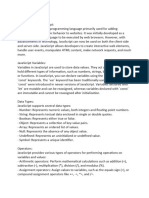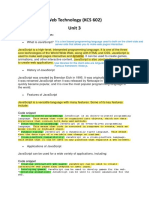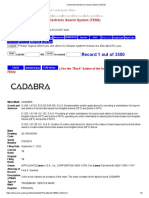0% found this document useful (0 votes)
28 views21 pages101 JavaScript Concepts You Need To Know - DeV Community
The document outlines 101 essential JavaScript concepts that every developer should know, covering topics such as variables, data types, control flow, functions, and asynchronous programming. It emphasizes the importance of understanding JavaScript's unique features like closures, prototypes, and the event loop for effective coding. Additionally, it touches on modern practices such as modules, error handling, and testing frameworks to enhance web development skills.
Uploaded by
IsaaxCopyright
© © All Rights Reserved
We take content rights seriously. If you suspect this is your content, claim it here.
Available Formats
Download as PDF, TXT or read online on Scribd
0% found this document useful (0 votes)
28 views21 pages101 JavaScript Concepts You Need To Know - DeV Community
The document outlines 101 essential JavaScript concepts that every developer should know, covering topics such as variables, data types, control flow, functions, and asynchronous programming. It emphasizes the importance of understanding JavaScript's unique features like closures, prototypes, and the event loop for effective coding. Additionally, it touches on modern practices such as modules, error handling, and testing frameworks to enhance web development skills.
Uploaded by
IsaaxCopyright
© © All Rights Reserved
We take content rights seriously. If you suspect this is your content, claim it here.
Available Formats
Download as PDF, TXT or read online on Scribd
/ 21






















































































